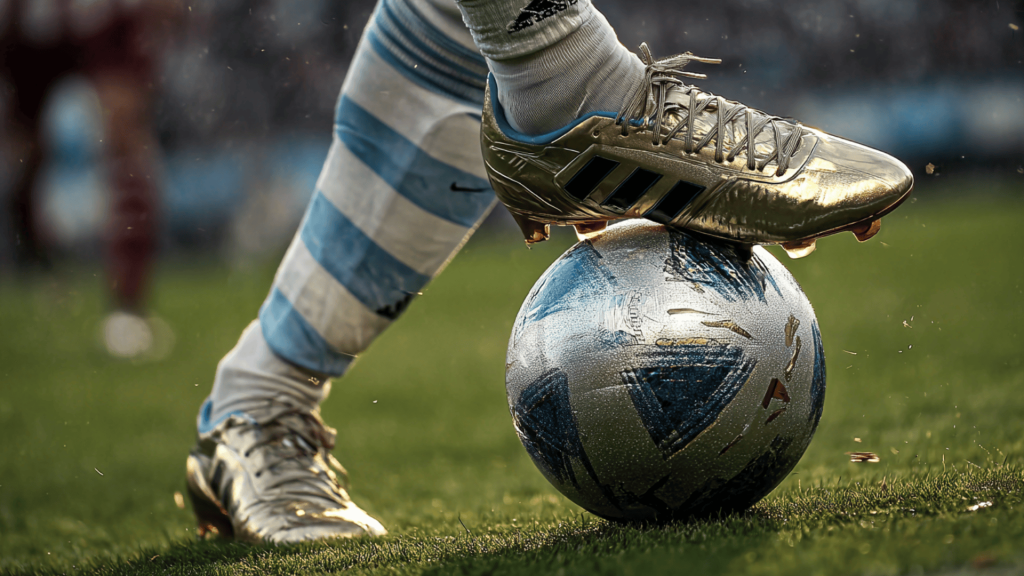Soccer is the world’s most popular sport, but many fans still scratch their heads when watching a match.
You’re not alone if you’ve ever felt confused about what just happened on the field! Many people love watching soccer, but don’t fully understand all the rules.
Soccer rules help keep the game fair and fun for everyone. They protect players from injury and ensure both teams have equal chances to win.
Learning these rules will help you enjoy soccer much more as a fan or player.
If you’re new to soccer or want to understand it better, these simple explanations will clear up any confusion you might have about soccer rules.
What Are the Basic Soccer Rules?
Basic soccer rules are simple guidelines that outline what players can and cannot do during a game. These rules make sure everyone plays fairly and safely.
They cover topics such as the number of players allowed on the field, what constitutes a foul, and the duration of games.
The rules are the same if you’re playing in a local park or watching the World Cup on TV. FIFA, which runs world soccer, makes these rules for everyone to follow.
The primary goal is to keep soccer enjoyable while ensuring all players are protected from injury during the game.
Number of Players and Match Duration

Understanding team size and game length helps you follow soccer better. Here’s what you need to know about players and timing.
| Category | Details |
|---|---|
| Players per Team | 11 players (including 1 goalkeeper) |
| Substitutions | Up to 5 players can be replaced during the game |
| Game Length | 90 minutes (45 minutes each half) |
| Break Time | 15-minute break between halves |
| Extra Time | Added time for injuries and delays |
| Overtime | 30 extra minutes if tied (important games only) |
| Penalty Shootout | Used to decide the winner if still tied after overtime |
These timing rules help games stay organized and fair for both teams.
Note: Youth soccer games are often shorter, with 30-40 minute halves instead of 45 minutes.
Starting and Restarting Play
Soccer has specific rules for starting and restarting play when the ball goes out of bounds or play is stopped. These rules keep the game moving smoothly.
How play begins and resumes:
- Kickoff – Game starts from the center circle, the team that wins the coin toss goes first
- Throw-in – When the ball crosses the sideline, the opposite team throws it back in
- Corner kick – Attacking team kicks from the corner when the defense last touched the ball
- Goal kick – Defending team kicks from the goal area when the attacking team last touched the ball
- Drop ball – The Referee drops the ball between players when play stops unexpectedly
These restart methods make sure the game continues fairly after any stoppage.
The Offside Rule Simplified
The offside rule stops players from camping out near the opponent’s goal waiting for easy passes.
A player is offside if they’re closer to the goal line than the ball and the second-to-last opponent when their teammate passes to them.
However, players cannot be offside in their own half, from throw-ins, corner kicks, or goal kicks. They also can’t be offside if they’re behind or level with the ball when it’s passed.
This rule promotes fair play and prevents goal-hanging, where an opponent waits by the goal for easy scores.
Fouls, Cards, and Fair Play
Soccer fouls and cards help referees control the game and keep players safe. Here’s what different violations mean for players.
| Foul Type | Examples | Punishment |
|---|---|---|
| Minor Fouls | Pushing, holding, tripping the opponent | Free kick, possible yellow card |
| Serious Fouls | Dangerous tackles, fighting, and bad language | Yellow or red card |
| Yellow Card | Warning for unsporting behavior | Player stays in game |
| Two Yellow Cards | Second warning to the same player | Player must leave (red card) |
| Red Card | Very serious foul or second yellow | Player immediately leaves game |
| Handball | Touching ball with hands/arms (not goalkeeper in box) | Free kick or penalty |
Fair play means respecting opponents, referees, and the game itself, a principle that FIFA strongly promotes.
Goalkeeper Rules
Goalkeepers have special soccer goalie rules that other players don’t have, but they also face unique restrictions.
They can use their hands to catch, throw, and hold the ball, but only inside their team’s penalty box. Once they pick up the ball, they have six seconds to release it; otherwise, the opposing team receives an indirect free kick.
Goalkeepers cannot pick up the ball if their own teammate passes it back to them using their feet; this is known as the back-pass rule.
Outside the penalty box, goalkeepers must follow the same rules as other players and cannot use their hands.
Free Kicks and Penalty Kicks
Free kicks and penalties are awarded when fouls happen during the game. These restarts can significantly alter the score.
Types of kicks and when they’re given:
- Direct free kick – Shot can go straight into goal, awarded for contact fouls
- Indirect free kick – Must touch another player first, given for technical violations
- Penalty kick – Awarded when a serious foul happens inside the penalty box area
- Free kick wall – Defending team stands 10 yards away from the kick location
- Penalty spot – Located 12 yards from the goal, only the kicker and the goalkeeper are allowed
These special kicks often decide close games and create exciting scoring chances.
Referees and Match Officials
The referee controls the soccer game and makes sure everyone follows the rules.
They can stop play, give cards, and award free kicks or penalties when needed. Two assistant referees help by watching for offside calls and when the ball goes out of bounds.
Many games now utilize VAR (Video Assistant Referee) technology to review key decisions, such as goals, penalties, and red cards.
These officials have complete authority during the match, and players must respect their decisions even if they disagree. Their job is to ensure the game is fair and safe for everyone participating.
Quick Reference Table of Common Restarts
When soccer play stops, these restart methods get the game going again. Knowing these helps you understand what happens next.
| Situation | Restart Method | Who Gets Ball |
|---|---|---|
| The ball crosses the sideline | Throw-in | Team that didn’t touch it last |
| Ball crosses the goal line (defense’s last touch) | Corner kick | Attacking team |
| Ball crosses goal line (attack last touch) | Goal kick | Defending team |
| Foul committed | Free kick | Team that was fouled |
| Ball enters goal | Kickoff | Team that was scored on |
| Play stopped for an injury | Drop ball | Neutral restart |
This soccer rules chart covers the most common situations you’ll see during any match.
Note: The referee decides which restart to use based on how and why play stopped.
Conclusion
Learning soccer rules doesn’t have to be complicated when you break them down into simple parts.
Remember the key points: eleven players per team, ninety-minute games, no hands except for goalkeepers, and the offside rule to prevent goal hanging.
Understanding fouls, cards, and various types of kicks will help you follow the action more effectively. These rules make soccer the beautiful game that millions of people love worldwide.
The more you know about soccer rules, the more you’ll enjoy watching and playing this great sport.
Ready to test your new knowledge? Watch your next soccer game and see how many rules you can spot in action! Share your favorite soccer moments or questions in the comments below.






































